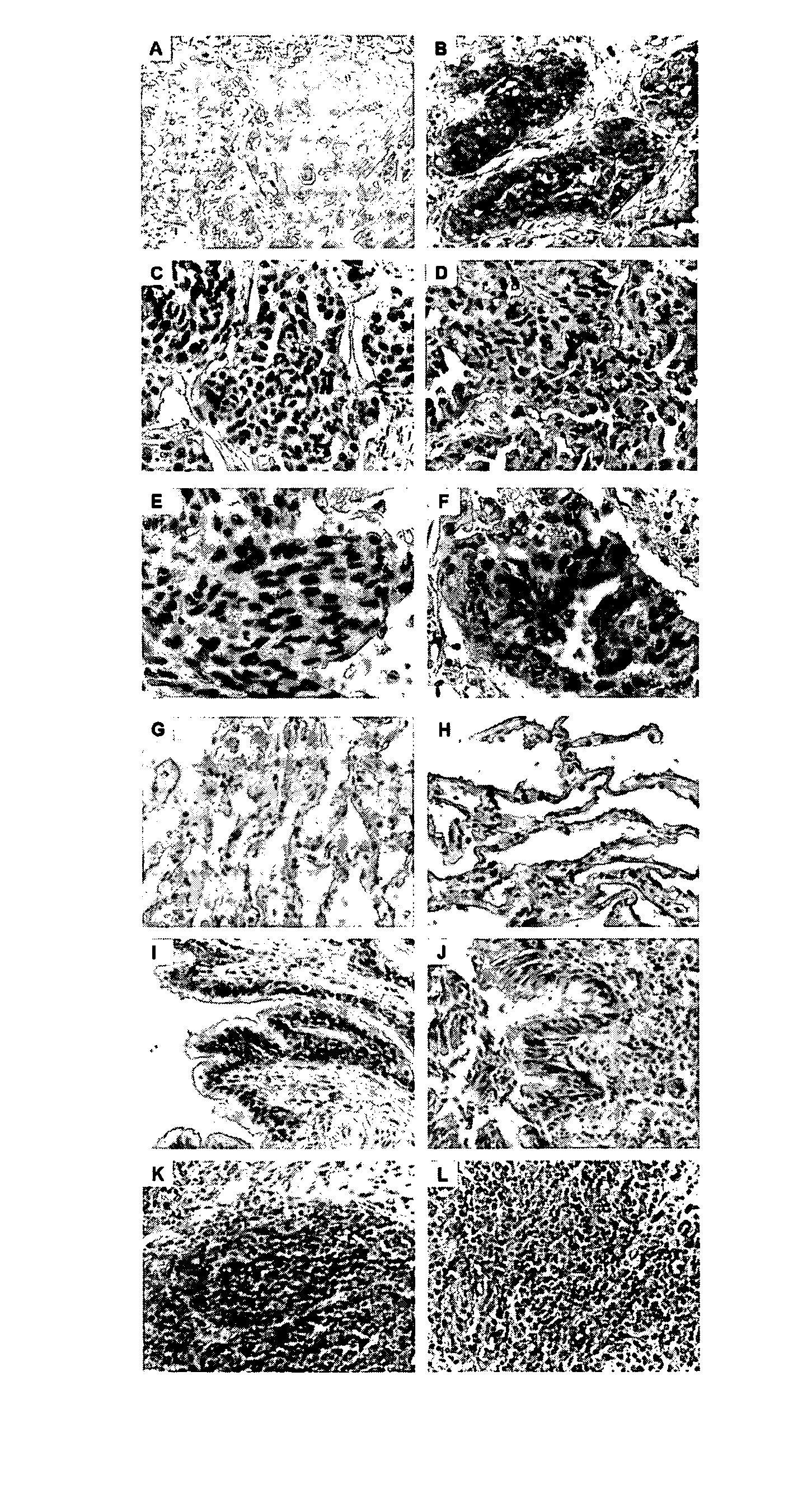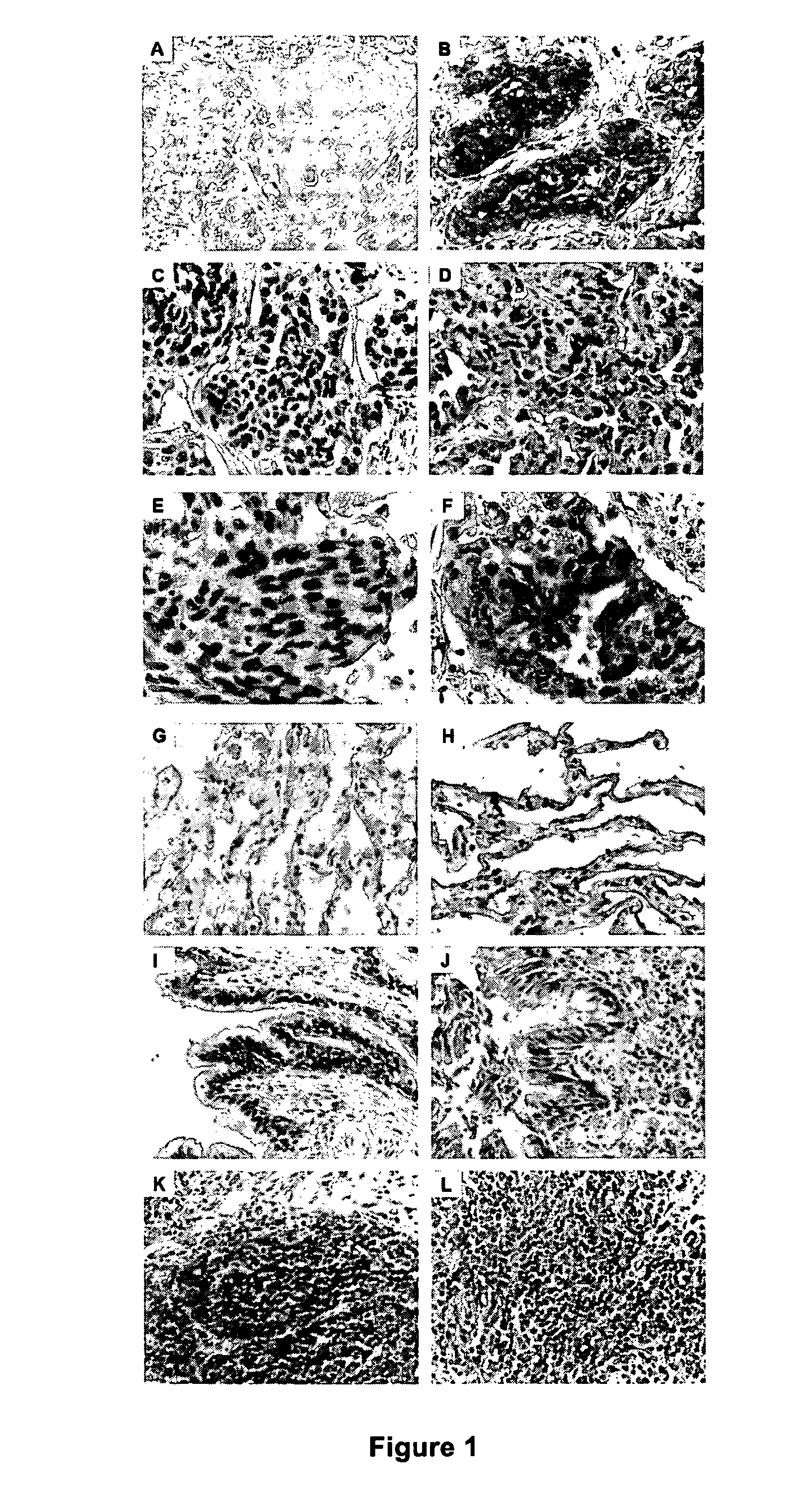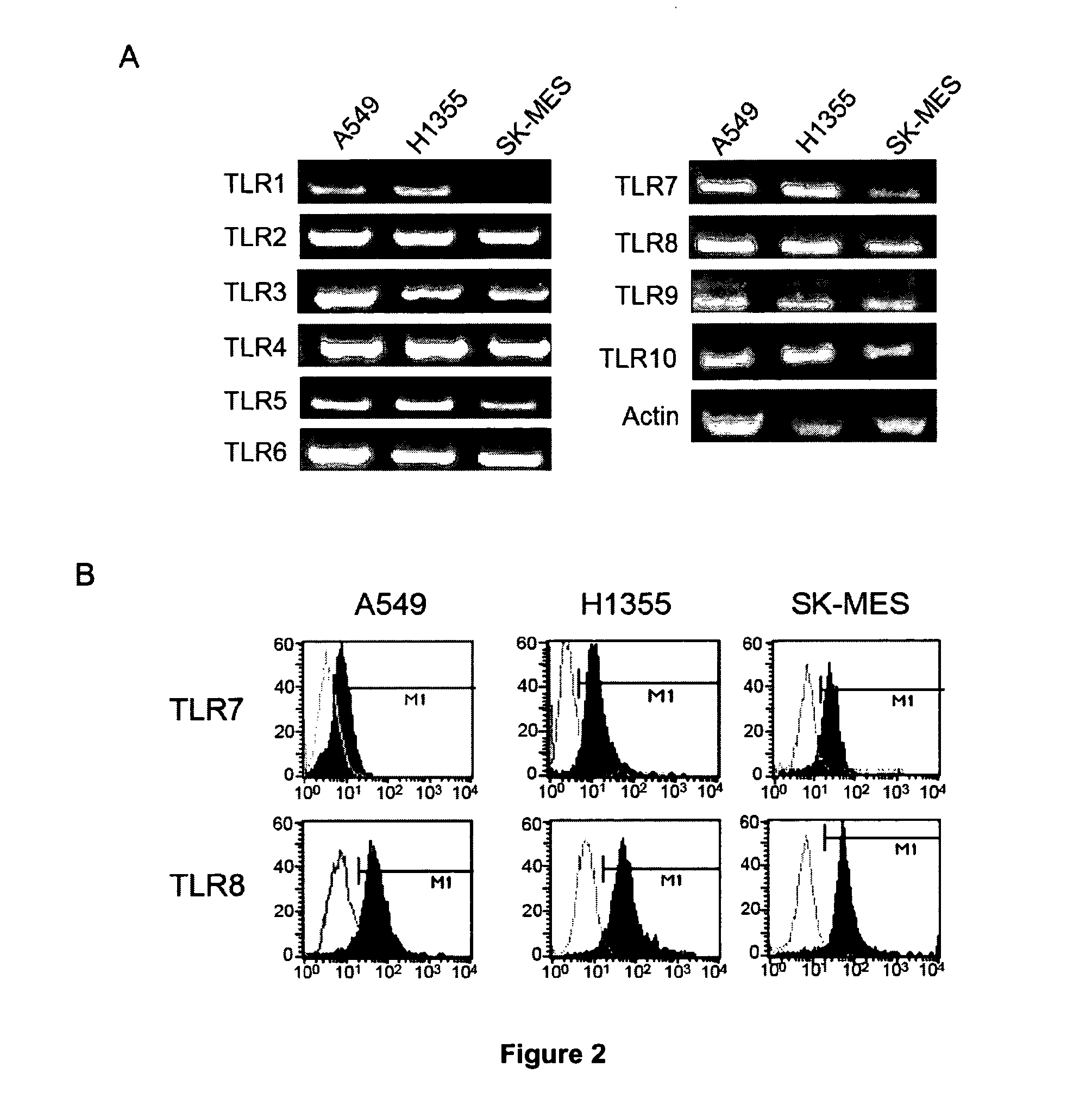Methods for Predicting the Response to Anti-Cancer Treatment with an Agonist of TLR7 or an Agonist of TLR8
a technology of tlr7 and agonist, applied in the field of methods for predicting the response to treatment and cancer treatment, can solve the problems of poor long-term survival
- Summary
- Abstract
- Description
- Claims
- Application Information
AI Technical Summary
Benefits of technology
Problems solved by technology
Method used
Image
Examples
example 1
Materials and Methods
Patient Tumors
[0112]Human primary lung tumor tissues were obtained from the Institut Mutualiste Montsouris (Paris, France) after medical surgery of stage I to III tumor patients (TNM classification). All patients underwent complete surgical resection of their tumors, including multilevel lymph node sampling or lymphadenectomy, but none received pre-operative chemotherapy or radiotherapy. Patients with mixed histologic features, metastasis, or pleural invasion were ineligible. The consent of all patients was obtained even though French law does not require specific approval of an Institutional Review Board or the consent of patients for retrospective observational, non-interventional analysis of medical records.
NSCLC Cell Lines
[0113]The A549 and Adenocarcinoma (ADC) cell lines and SK-MES Squamous Cell Carcinoma (SCC) were obtained from the American Type Culture Collection (ATCC). The H1355 ADC cell line was obtained from Dr. S. Rogers (Brigham and Women's Hospita...
example 2
[0137]The inventors have obtained biopsies from NSCLC patients (stage 111A or 1V) that have been treated with chemotherapeutic agents, including cisplatin and gemzar. TLR7 and TLR8 expression is studied by immunohistochemistry on these biopsies in order to analyze the correlation between TLR7 or TLR8 expression on tumor cells in the biopsy and the clinical status of the patients after the chemotherapy. Indeed, some patients respond well to the treatment, whereas others are resistant.
[0138]The same study is performed on patients having a large B cell lymphoma, on a, cohort of 24 patients, that were included in a protocol of chemotherapy, and for which the clinical status after the therapy is known.
[0139]Preliminary results indicate that, as for NSCLC patients, the expression on TLR7 in the tumors is heterogeneous. Indeed:[0140]in 9 patients out of 24, 100% of the tumor cells were TLR7+;[0141]in 9 patients out of 24, 50% of the tumor cells were TLR7+;[0142]in 1 patient out of 24, 25% ...
example 3
[0144]In this example, the inventors have demonstrated that the expression of TRL7 in cancer cells is a good indicator for predicting the response to treatment with an anti-cancer agent in a patient suffering from cancer. They also demonstrate that the expression of TLR7 in cancer cells is correlated with the development of metastatic tumors and with poor prognosis.
NOD / SCID Mice
Material and Methods
[0145]NOD / SCID (nonobese diabetic / severely compromised immunodeficient) mice were bred at the animal facility of the Centre de Recherche des Cordeliers, Paris, France, from NOD / SCID parents obtained from Charles River (France). Mice were anesthetized by intra-peritoneal injection of a solution containing 3.2 mg of ketamine (Virbac) and 0.16 mg of xylasine (Rompum 2%, Bayer Healthcare) in 80 μl of PBS (Gibco). Five days prior to experimentation, A549 cells were pre-stimulated with 100 μM Loxoribine (Invivogen) or left unstimulated. For each condition 5×106 cells were diluted in 250 μl PBS a...
PUM
| Property | Measurement | Unit |
|---|---|---|
| pH | aaaaa | aaaaa |
| volume | aaaaa | aaaaa |
| volume | aaaaa | aaaaa |
Abstract
Description
Claims
Application Information
 Login to View More
Login to View More - Generate Ideas
- Intellectual Property
- Life Sciences
- Materials
- Tech Scout
- Unparalleled Data Quality
- Higher Quality Content
- 60% Fewer Hallucinations
Browse by: Latest US Patents, China's latest patents, Technical Efficacy Thesaurus, Application Domain, Technology Topic, Popular Technical Reports.
© 2025 PatSnap. All rights reserved.Legal|Privacy policy|Modern Slavery Act Transparency Statement|Sitemap|About US| Contact US: help@patsnap.com



